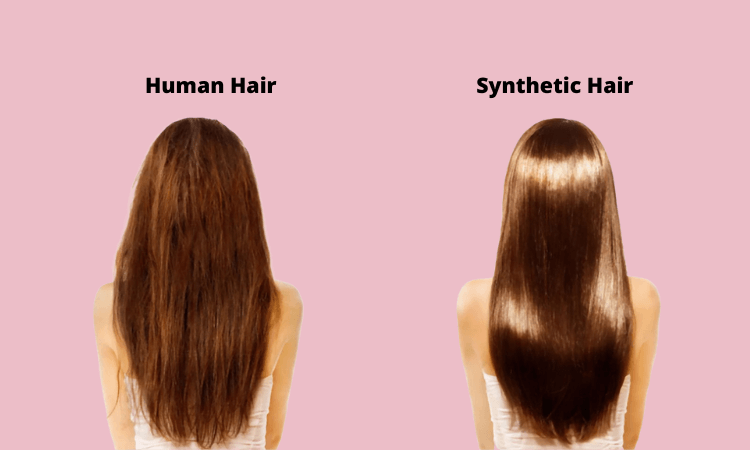Choosing a natural-looking wig can be a daunting task with so many options available in the market. The key to finding the perfect wig is understanding the various factors that contribute to a wig’s overall appearance and natural aesthetics. In this article, we will guide you through the essential elements you should consider to make an informed decision and ultimately select the most natural-looking wig to enhance your unique style.
Key Takeaways
- Understand the importance of wig materials, such as human hair or synthetic fibers, in achieving a natural appearance
- Evaluate cap constructions to ensure a comfortable fit and realistic look
- Consider wig specifications, from color to density, to ensure the best match for your unique style
Understanding Wig Materials
When choosing a natural-looking wig, it’s crucial to understand the different materials used in their construction. Quality and appearance can vary significantly between wigs made from synthetic fibers and those made from 100% human hair.

Synthetic Fibers vs. Human Hair
Synthetic fibers are man-made materials designed to mimic the look and feel of real hair. High-quality synthetic wigs offer various benefits, including:
- Lower cost compared to human hair wigs
- Low maintenance, as they hold their style even after washing
- Lightweight, making them comfortable for everyday wear
- Availability in a wide range of colors and styles
However, synthetic wigs might not have the same natural appearance and versatility as human hair wigs. Their limitations include:
- Less natural movement than human hair wigs
- Limited heat styling options, as excessive heat can damage the fibers
- Susceptibility to tangling, especially in longer styles
- Shorter lifespan, typically ranging from 3 to 6 months
On the other hand, human hair wigs are made from 100% human hair and often provide a more natural look. They offer several advantages:
- Greater versatility in styling, as they can be heat-styled, colored, and cut
- Longer lifespan, often lasting more than a year with proper care
- Natural movement and feel that closely resemble real hair
Nonetheless, human hair wigs come with some drawbacks:
- Higher price tag than synthetic wigs
- Require more maintenance, as they need regular washing, conditioning, and styling
- Susceptible to environmental factors such as humidity and rain
Weigh the pros and cons of both synthetic fibers and human hair wigs to determine which material best suits your needs and preferences. Carefully consider factors like budget, maintenance requirements, and frequency of use while making your choice. By understanding the differences between these two materials, you can make a well-informed decision and find the perfect natural-looking wig for you.
Evaluating Cap Construction
Lace Front and Full Lace Caps
When choosing a natural-looking wig, it’s essential to consider the cap construction. Wigs with lace front or full lace caps offer a realistic appearance because they create the illusion of natural hair growth along the hairline. Lace front wigs are versatile, allowing you to style your hair away from your face, while full lace wigs provide even more realism. These wigs are typically more expensive but worth the investment for the natural appearance they offer.
Cap Features for Comfort
Comfort is also a significant factor when choosing a wig cap. Many wig cap constructions provide features that maximize comfort while wearing the wig. You may want to consider options like 100% hand-tied caps, which are designed using a process where individual hair fibers are manually tied to the mesh base. This ensures the wig is lightweight and breathable, offering a comfortable wearing experience. Additionally, look for wig caps with adjustable straps and materials like soft lace and silk to ensure a snug and secure fit.
Selecting Glueless Lace Wigs
For those who want to avoid using glue or tape, glueless lace wigs are an excellent choice. These wigs often come with combs, clips, or adjustable straps that secure the wig in place without needing any adhesives. Glueless lace wigs offer a natural look, with the added convenience of easy application and removal. These wigs are perfect for anyone with a sensitive scalp or concerned about potential damage to their natural hair from adhesives.
Assessing Wig Specifications
When choosing a natural-looking wig, various factors like density, style, and materials can greatly impact the overall appearance. This section explains the importance of assessing wig specifications such as wig density.
Wig Density
Wig density refers to the amount of hair present on the wig cap. This factor influences how full and thick the wig appears. Generally, wigs are available in three density levels:
- Light (80-100%) – Best for a casual, natural look with minimal volume. Suitable for humid areas or warmer temperatures.
- Medium (120-130%) – Offers moderate volume, strikes a balance between a natural appearance and a cover-up for hair loss.
- Heavy (150-180%) – Provides the most volume with a thick, voluminous look. Ideal for those comfortable with bold and glamorous styles.
To achieve a natural appearance, consider your personal preference and comfort level when selecting wig density. However, it is often suggested to opt for a medium density for the most versatile and natural look.
Wig Materials
Another important specification to consider is the wig materials. Wigs are primarily made of two types of materials: synthetic and human hair. Synthetic wigs offer affordability and low maintenance, while human hair wigs provide a more natural look and feel. Full lace and lace front wigs deliver a realistic appearance as the lace blends with your scalp, making it less noticeable.
Wig Sizing
Accurately measuring your head size is crucial for a comfortable and secure fit. Measure your head circumference by placing a tape measure around your hairline, just above your ears and eyebrows. Most wigs are adjustable, but getting the closest possible size will ensure the best fit and a natural look.
Conclusion
Finding a natural-looking wig is a combination of selecting the right material, color, and style. Opt for a 100% human hair wig to ensure the most realistic appearance. Additionally, consider your skin tone and face shape when choosing the color and style of your wig.
To achieve a natural look, proper wig placement is crucial. Place the wig approximately four fingers above your brows. Ensure that your wig has styling versatility, as this allows you to style it like real hair and achieve various looks, enhancing the authenticity of your wig.




